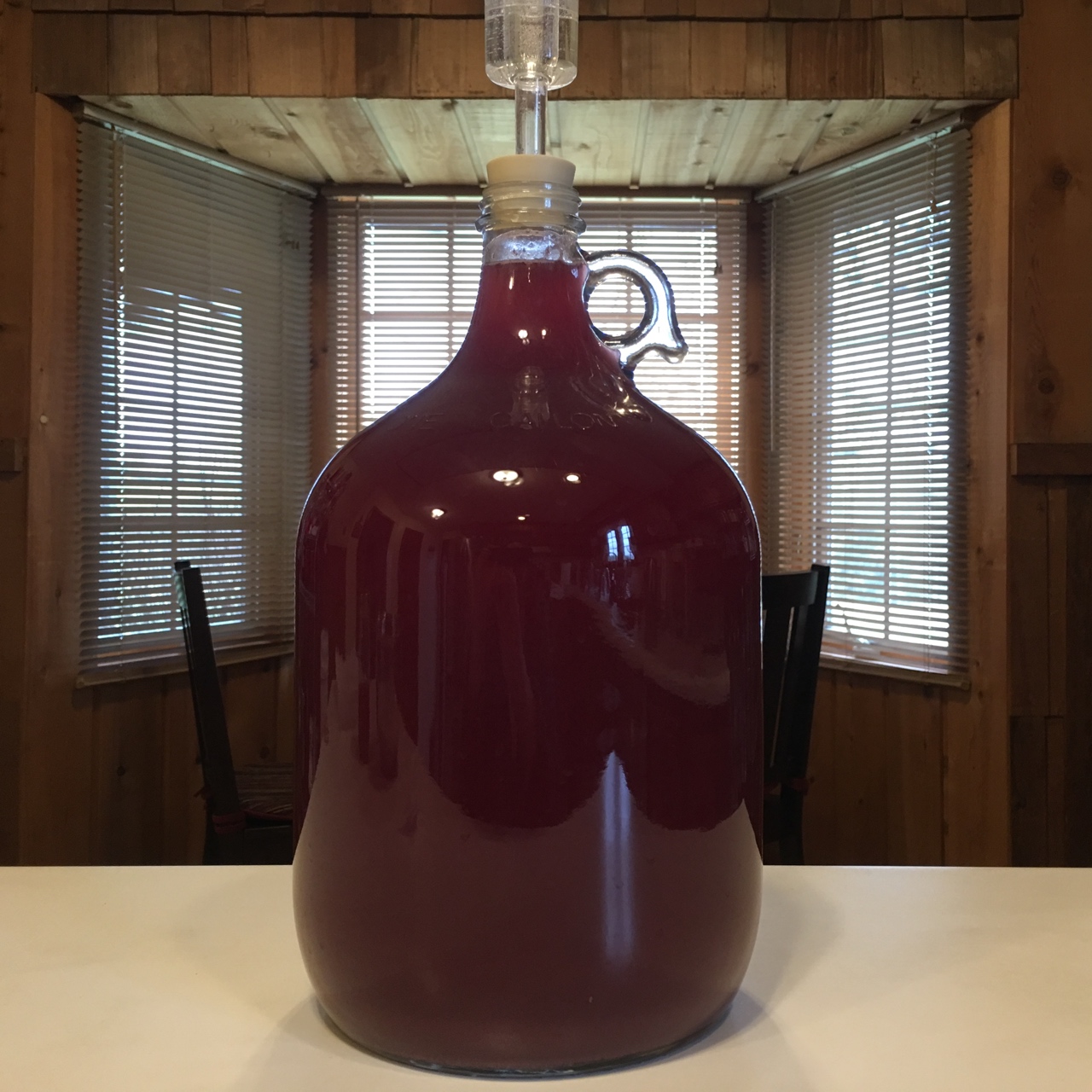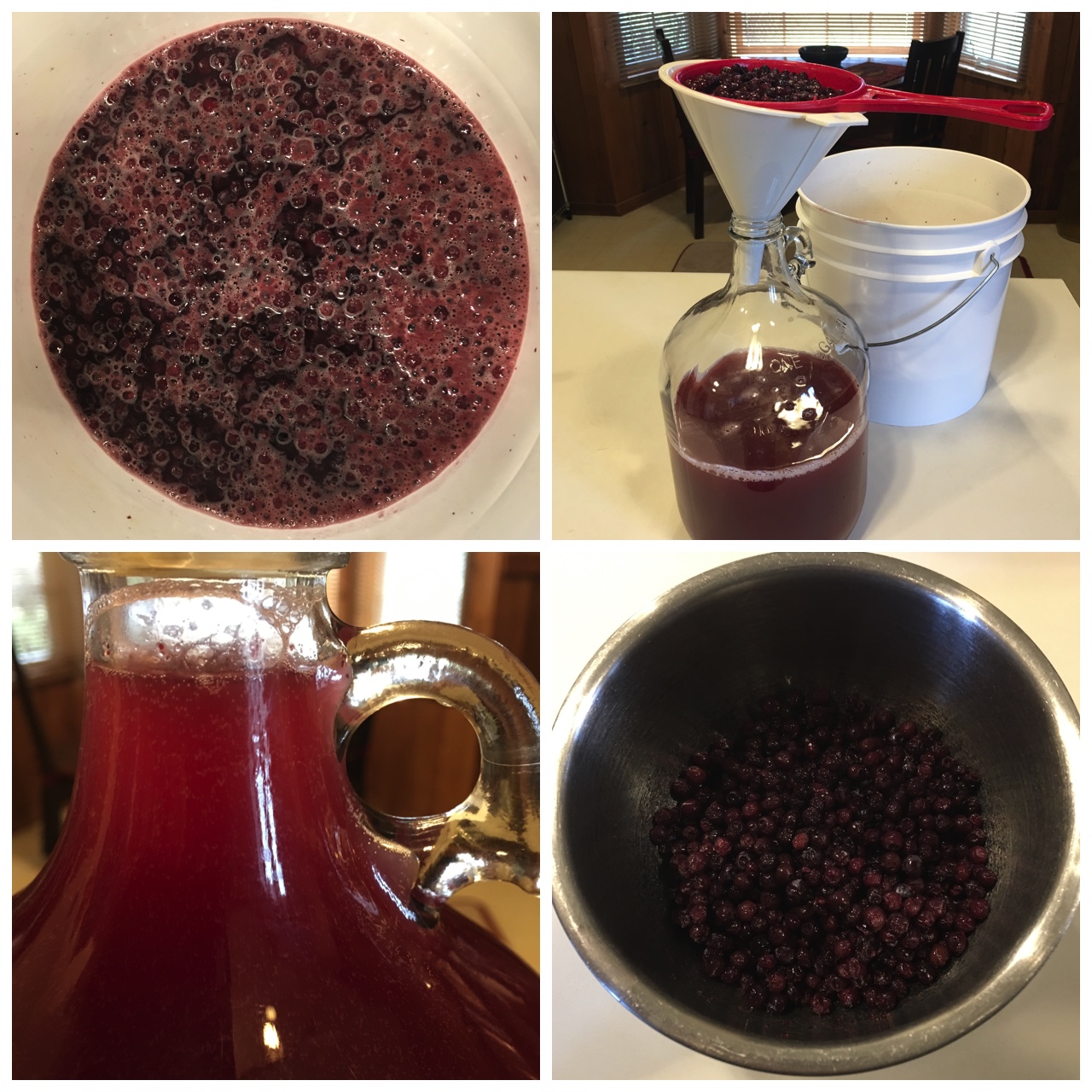
So this was my first foray into the world of wild-fermented mead, and despite using raw honey and adding fruit to try to facilitate the ferment, after four days, there was no detectable activity. Puzzling. Not to worry, though…as a winemaker, I have plenty of yeast on hand, so I added a little slurry from a previously-made berry wine’s lees. I keep the slurry in the refrigerator to extend its life, so it took a while to come up to room temperature in the primary fermentor; when it did, though, it looked the way I expected: bubbly.
After week in the primary, I strained off the fruit and moved the bilbemel to a secondary fermentor (a gallon glass jug). This gets the wine off any yeast sediment that’s fallen to the bottom of the primary fermenter, and also aerates the liquid. Upon transferring to the secondary, the bilbemel was very effervescent and had the airlock burping regularly. Signs of good fermentation!
Mead may actually be drunk very young, so I had to taste the small amount left in the primary fermentor after the racking was complete. It was actually very good – still sweet, of course, but the flavor is there: blueberry, with strong honey notes. I’ll let it continue to work its magic in the secondary until the fermentation has ceased, then bottle it up.

What would I do differently next time? First, I’d purchase local raw honey because I think it would be more likely to contain active microbes to help facilitate the ferment. Second, I’d use fresh, rather than frozen, fruit: while freezing may not kill the yeast naturally present on the fruit at the time it’s frozen, fresh fruit’s yeast will be more active and thus better able to start the fermentation process. A melomel made with local raw honey and fresh wild berries would probably ferment enthusiastically, especially if made in the warmer months. I’m already thinking about the possibilities with foraged fruit and plants from around the farm…definitely more mead to come in the future!
As you’ve read, not all ferments happen the way you desire, and the causes may be manifold. If your wild ferment isn’t fermenting, consider adding a starter appropriate to the type of ferment (in this case, recycled wine yeast – if you were making a fermented vegetable, adding something like brine from a previous ferment or milk kefir whey would be good options) to kick the fermentation into gear. Don’t give up – just think of a situation where a ferment isn’t proceeding as desired as as an opportunity to come up with a creative solution to a slightly vexing problem!
Can you guess what a Capsicumel is? How about a Morat? Check out Sky River Meadery’s comprehensive list of mead types to learn more about the many varieties of mead. And if you’re in the Woodinville, WA, area, check out their tasting room (and plan accordingly because you will be bringing home bottles of the delicious nectar)!
